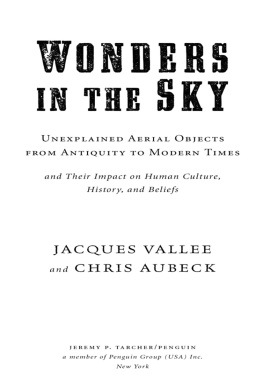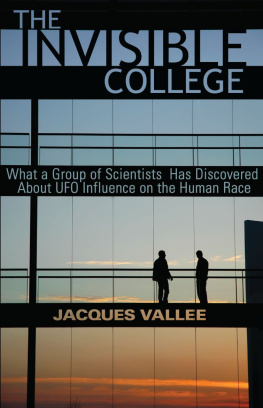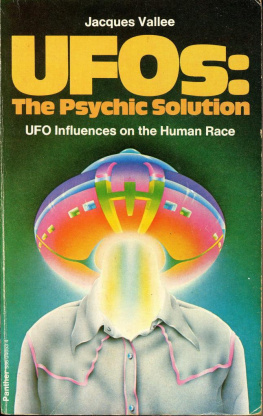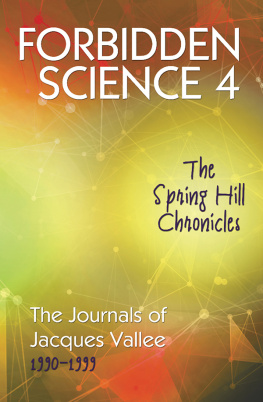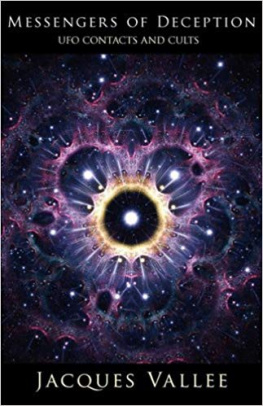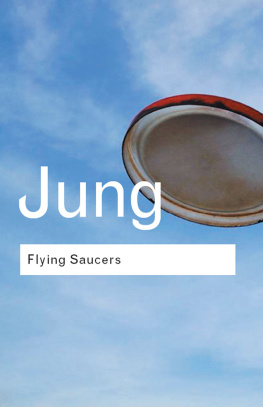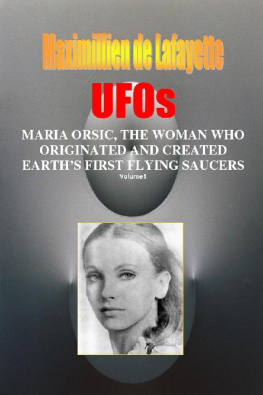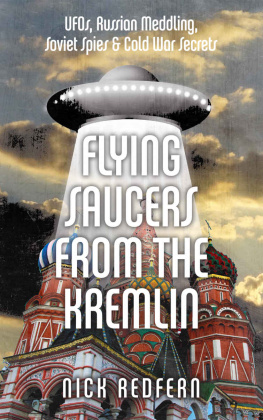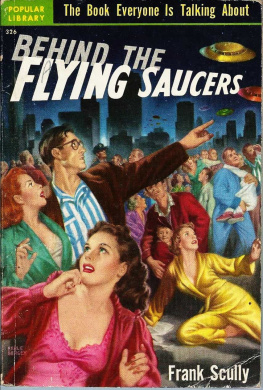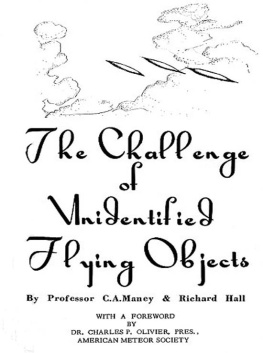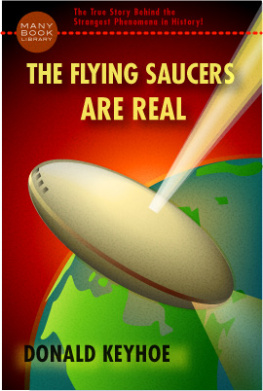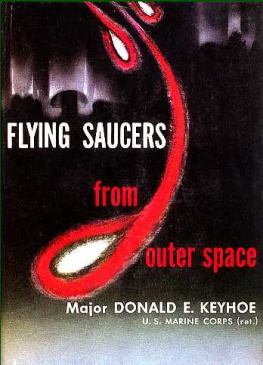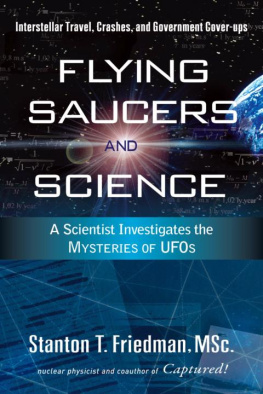ANGELS OR DEVILS?
We have already noted several instances connecting unknown beings with the theft of agricultural products. Lavender plants, grapes, or potatoes seem to have been taken away with equal dexterity by the mysterious little men. In story after story, from North and South America and from Europe, the creatures are seen flighting from their shiny craft, picking up plants, and taking off again before amazed witnesses. Such behavior is well designed to make the investigators of such stories assume that the visitors are gathering samples with all the care and precision of seasoned exobiologists. Are we not, after all, designing robots that will accomplish the preliminary analysis of the Martian flora when the first rockets reach that planet? In a few cases, the visitors even take the time to interview the witnesses at length concerning agricultural techniques! Such was the case in a landing that, curiously enough, took place in Tioga City, New York, on the very day of the Socorro landing, about ten hours before Officer Zamora observed the egg-shaped, shiny object so familiar to us now.
Gary T. Wilcox, a dairy farmer, was spreading fertilizer in his field. Some time before 10:00 A.M., he stopped to check a field surrounded by woods, about a mile away from his barn. He wanted to see whether ground conditions would allow plowing. As he approached the field, however, he saw a shiny object, which lie first took to be a discarded refrigerator, then a wing tank or sonic other aircraft part. When he drew closer, he realized that the object was egg-shaped and about twenty by sixteen feet, had the appearance of durable metal, and did not look like anything he had ever seen before.
He touched it. It was not hot.
He observed no door or hatch of any kind. And yet two humanlike creatures suddenly appeared. They were about four feet tall and wore seamless clothing, with headdress and a full-face hood, which did not allow Wilcox to observe any facial features. They appeared to have arms and legs. They talked to him "in smooth English/' but their voices did not come from their heads, as far as Wilcox could tell, but from their bodies.
"Do not be alarmed, we have talked to people before. We are from what you people refer to as Planet Mars," they said.
In spite of Gary's conviction that "someone must be playing a gag on me," the strange conversation continued. The two beings were interested in fertilizers and expressed considerable interest in their use. They stated that they grew food on Mars, but that changes in the environment were creating problems they hoped to solve by obtaining information about our agricultural techniques. Their questions were quite childish, and they appeared to have no knowledge of the subject whatever. Each one carried a tray filled with soil.
"When they talked about space or the ship, I had difficulty in understanding their explanations. They said they could only travel to this planet every two years and they arc presently using the Western Hemisphere," Wilcox reported.
They explained that they landed only during daylight hours, "because their ship is less readily visible in daylight," and they said they were surprised that Wilcox had seen their craft. They also volunteered information about space travel. Our astronauts would not be successful, they said, because their bodies would not adapt to space conditions. Finally, they requested a bag of fertilizer but, as Gary Wilcox walked away to get it, the craft took ofl; disappearing from sight in very few seconds. The witness left a bag of fertilizer at the place; the next day it was gone.12
A list, even incomplete, of similar cases would rapidly induce tedium. In most of the South American landings, entities have been described walking away with soil samples, plants, even boulders. Everything in their behavior seems designed to make us believe in the outer-space origin of these strange beings and their craft. And, indeed, such incidents have greatly influenced the researchers who have "independently" concluded that the UFO's are space probes sent by an extraterrestrial civilization.
On November 1, 1954, Mrs. Rosa Lotti-Dainclli, forty years old, was going to the cemetery at Poggio d'Ambra, Bucine, near Arezzo, Italy. A devout Italian woman, she was carrying a pot containing flowers. Her mind at that moment must have been very far indeed from science fiction speculation, and yet what happended to her in the next minute constitutes perhaps the slnmgest of the entire wave of 1954 incidents.
As Mrs. Lotti-Dainelli walked past an open grassy space, she saw a vertical, torpedo-shaped machine with pointed edges: a machine, in other words, shaped like two cones with common hases. In the lower cone was an opening through which two small scats were visible. The craft looked metallic. It did not resemble anything the witness had seen before.
From behind the object, two beings appeared. They were three ;md a half to four feet tall. They looked joyful. Their smiles displayed white and very thin teeth. They were wearing gray coveralls and reddish leather helmets similar to those used by military drivers. They had what seemed to be a "convexity" at the center <=f their foreheads. Speaking an incomprehensible language, the two closed in on the woman, and one of them took away from her Hie pot containing the flowers.
Mrs. Lotti-Dainelli now tried to get her property back, but the two beings ignored her and returned to their craft. The witness slarted to scream and run away. But she returned to the spot with other witnesses, including policemen. Too late. Not a trace of the object was left. But it seems that other people saw the craft in flight, leaving a red and blue trail.
These stories would be "amazing" and nothing more if it were not for one fact known to students of folklore: a constant feature of one class of legends involving supernatural creatures is that the beings come to our world to steal our products, our animals, and evenas we shall see in a later chapterhuman beings. But for I he moment, let us concern ourselves only with the "sample- gathering" behavior of these beings and their requests for terrestrial products.
In an Algonquin legend embodying all the characteristics of an
excellent saucer story, a hunter beholds a basket that comes down from heaven. The basket contains twelve young maidens of ravishing beauty. The man attempts to approach them, but the celestial creatures quickly reenter the "basket/1 which ascends rapidly out of sight. However, witnessing the descent of the strange object on another day, the same hunter uses a trick to come close to it and succeeds in capturing one of the girls, whom he marries and by whom he has a son. Nothing, unfortunately, can console his wife for loss of the society of her sisters, who have gone away with the flying vehicle. So, one day she makes a small basket, and, according to Hartland,
having entered it with her child she sang the charm she and her sisters had formerly used, and ascended once more to the star from whence she had come.
She had been back in that heavenly country two years when she was told:
Thy son wants to see his father; go down therefore, to the earth and fetch thy husband, and tell him to bring us specimens of all the animals he kills.
She did so. And the hunter ascended with his wife, saw his son, and attended a great feast, at which the animals he had brought were served.
The Algonquin story offers a complex mixture of themes. Some of them are present in modern-day UFO stories; others derive from traditional concepts, such as the exchange of food, which we have already discussed. The new elements are: (1) the desire expressed by the celestial beings to receive specimens of all the animals the hunter kills, and (2) the idea that intermarriage between the terrestrial and the aerial laces is possible. This latter aspect will be examined separately in Chapter Four.
Next page

